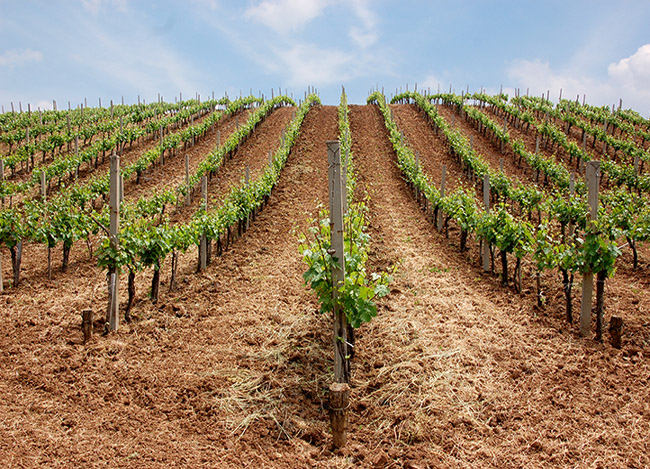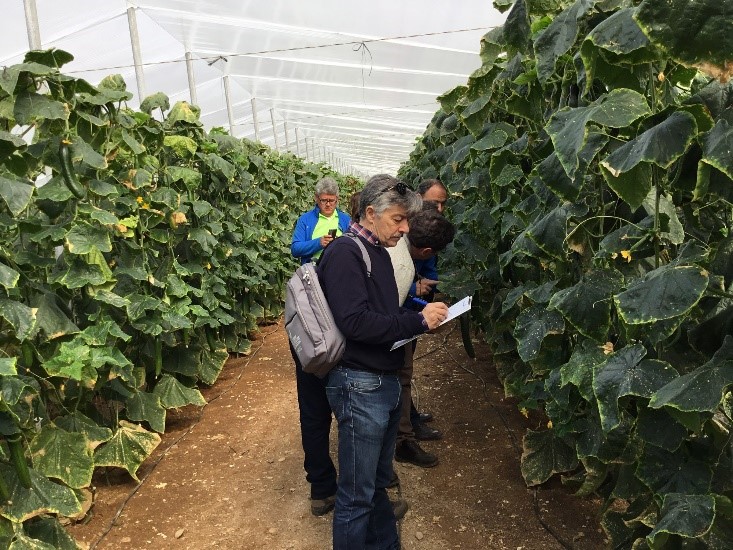AgriBusiness Global LIVE Investigates Formulation and Advances in Drones
Drone use is increasing exponentially in the U.S. agricultural market as well as in Asia. At the AgriBusiness Global LIVE! Drone Update webinar, four panelists discussed the future of drones and specific formulation opportunities for this ag tech segment.
From the 562 registered attendees, several questions were posed to our panelists. Here, Rene Haensel, Technical Director Agriculture & Global Senior Expert for Evonik, and Arthur Erickson, CEO/Co-Founder from Hylio, answer questions from participants of the live broadcast.
ABG: Are nano or high-performance liquids a solution for the drone spray issue?
Rene Haensel (RH): In Europe, we have in some countries already to confirm that the adjuvants are free of nanotechnology. There is seen a danger of nano particles. I see this can be a future, critical issue for drones in general.
The use of high-performance liquids is a solution. Products that show some multifunctional properties are being used in conventional application, but also for drones. I will mention here polyether-trisiloxane technology, which is extremely low-surface tension of water and therefore excellent adhesion and retention of spray droplets and also spreading, can be blended with substances which provide drift control. One can use here conventional technology for blending like some oils or polymers like guar gums, polysaccharide but also sophisticated technology based on insoluble droplets with very low surface tension.
ABG: Does the drone propeller contribute to drift?
Arthur Erickson (AE): The drone propellers actually mitigate the drift. This is due to the fact that their downwash is driving the majority of the particles downward into the target crop as opposed to allowing the ambient wind conditions or temperature inversions to carry the spray away (i.e. drift).
The vortices created by the propeller wingtips do recirculate some portion of the spray causing temporary upward moving of some of the particles, but the aggregate behavior of the spray is still downward into the target crop.
ABG: What about pulse width modulation (PWM) for drift control?
AE: Generally speaking, there are many other factors in drone spraying that have much stronger influences on the drift behavior than the PWM behavior of the nozzles.
The drone’s speed and altitude have a major effect on overall spray deposition performance and also highly important is the spatial placement of the nozzles in relation to the rotors (mounted closer to the center of the rotor axis = better drift control).
PWM is useful insofar as it is used to consistently produce droplets of a certain size. We actually do use PWM controls for our spray systems on our drones, but the overall effect is simply maintaining a consistent pressure and flowrate as defined by the operator. We happen to use PWM to do this in our system, but there are other ways to maintain consistent pressure/flowrate, which would correspond to some desired droplet size.
ABG: What are the types of agricultural drones used?
AE: In essence, there are two types of drones.
There are scouting drones that are relatively small UAS of the multi-rotor, fixed wing, or VTOL variety that carry RGB and/or other types of sensors for photographing crops in order to analyze them. While we previously didn’t have a model to offer in this category, Hylio is launching a drone in this category called the PHOTON this year.
A second type are the application drones. These are relatively large UAS from 54lbs up to 500-600 lbs. MTOW which are primarily designed to deliver as much agricultural input payload as possible within a given timeframe. More precisely than traditional methods such as planes, helicopters, etc., this is the product category Hylio has traditionally been focused on with its AG and HYL series application drones.
ABG: What programs exist to support ongoing training at the farm gate?
AE: Hylio has established a trained dealer network that offers paid, in-person training (both at the dealer’s site and the customer’s site – pricing may vary).
Additionally, Hylio has a simulator tool within its software that is available to every customer upon purchase of our drone products which simulates virtually every aspect of our product workflow, meaning the operator can plan and rehearse any type of operation they want virtually before attempting it with real hardware assets. This is a very useful initial and ongoing training tool for our customers and their teams.
ABG: How do you overcome the issue of drift? Why can’t drones be operated at low heights (ex: 1 m height)?
AE: Drones can be used at low heights, but generally our operators avoid doing that because you are limiting the effective swath you achieve when you fly that low. The swath comes out in a triangular pattern (imagine a Christmas tree); flying at ~10-12 feet above the canopy of the crop generally guarantees that your swath has enough space and time to hit that widest point at the bottom of the Christmas tree (~30 feet tip to tip for our ARES HYL-150 unit, for example).
As mentioned in previous responses, drift is quite well controlled if the drone is used properly. To start with, you still should not apply in ambient wind conditions greater than 15 mph or so, but whatever the product label says is what you need to go with (many herbicides enforce 10 mph or slower winds, for example).
Most people running into drift issues with drones are either spraying at inappropriate times (as just mentioned, too high ambient wind conditions) or they are not using proper parameters. If you fly too high above the crop canopy the downwash can dissipate before the input reaches the crop and therefore there may be a higher drift risk (you should maintain 10-12 feet above the crop as a max height generally).
Also, if you are flying too fast while applying, the downwash becomes less effective at controlling the drift (generally applications should be done at 25 mph or slower for best results). Also, sometimes people choose a droplet size that is too small and more susceptible to drift, especially when high temperatures can cause heat inversions. Generally, you want to target applications in the medium-coarse droplet range which would be around 250-400 microns.
RH: For drift control, the conventional additives being used for ground application can be used, those additives are based on polymers which increase the elongational viscosity of the spray droplets and can
hold the expanding water film together.
Polymers being used here are guar gums, xantham, polysaccharides and others. Disadvantages can be the reduction of spray angle. New technology is based on insoluble droplets with very low surface tension based on polyether-polysiloxane technology, which is being used often in defoamer technology but also there are patents which used polyglycerolester technology.
These products provide an earlier breakup of the expanding water film, which results in bigger droplets that are less prone to drift. If those droplets contain surfactants that provides spreading on the leaf, so increased contact of the spray droplets to the leaf surface, this could be an optimized solution.
ABG: A common issue I have come across in Asia is that drones can’t be effective in tree crops such as durians and mangoes as they can’t cover the entire canopy. Is there a way to overcome this issue to widen the usage of drones?
AE: If you mean that the swath width isn’t wide enough to cover the entire canopy, this is easily solved by simply flying passes at the appropriately set width. If the tree is 30 feet and your drone only has a 20-foot effective swath, you’ll still cover the 30 feet as long as you appropriately set your swath width setting in your ground control software to 20 feet or less. In this case I’d recommend something like 15 feet so in two passes you cover the 30 ft. width of the tree and have some overlap to ensure proper coverage.
If the problem is that the spray isn’t penetrating to the lower levels of the foliage beneath the canopy, this can be solved in a variety of ways. Typically larger, heavier droplets will penetrate better simply due to gravity, but also slower application flight speeds will allow the drone to linger over a given area longer, which gives the downwash time to propagate and disperse canopy, allowing the drones to apply to foliage well below the top layer.
Finally, the increasing flow rate coupled with the larger droplets as mentioned earlier generally ensures that enough liquid is present to make its way to the lower levels.
ABG: How far away is drone technology from identifying pests and performing a spot spray application? For example, treating aphids in an orchard.
AE: This is possible now, but I’m not sure if there are any existing commercial products that specifically identify aphids in an orchard. Hylio already supports ingestion of prescription maps for targeted applications like this, and many of our customers are already doing similar things.
One distinction to make is that generally its more time and resource efficient to have a separate scout drone to scan the crop and ID the problems and then have the application drone follow up for the actual treatment.
With that being said, it is possible to have the application drone itself scan, identify issues, and then spray them all in real time in the same flight. It’s just not battery efficient to do so because you are carrying payload and burning a lot of energy during the scouting sequences.
I think in the next 2-3 years, the landscape and choices for OTS (off the shelf) ML models that can do things like identify aphids specifically will increase and thus you’ll be able to access those and couple them with Hylio drones, as one example, to do what you want.
With Hylio’s launch of the PHOTON scout drone and foray into the agronomic scouting vertical, we will begin releasing models that are useful for our customers, but I couldn’t tell you if/when we’d have a specific one for aphids. We’d likely start with the more common use cases for our application drones which would be targeting fungal diseases in corn such as tar spot.
ABG: How is the use of drones in the war in Ukraine affecting the development of ag drones? New technology, new capabilities, lower costs?
AE: Most of the technological development in that regard are geared toward war applications so not a lot of direct carryovers that is applicable to ag drones yet. Financially though, it has encouraged the U.S. government to invest more in U.S. drone companies through loan and grant programs. If those programs are funded, we should start seeing larger scale production on the U.S. side, which would almost certainly lead to lower costs eventually.
ABG: Is there a database or list for ag chemicals that can be used in drone application in the U.S? Or is evaluation primarily done on a case-by-case basis?
AE: There isn’t a central database, as far as I know. It’s mostly done on a case-per-case basis. Generally, in most states, anything that is permissible to spray via traditional aerial method (airplane or helo) is also legal for drones. Drones must also follow the same aerial label rules.
ABG: Does anyone have experience using drones for vector mosquito control? If so, how does it work?
AE: It works well. Usually inputs for mosquito control can be spray much higher and at much smaller dosages per acre than the traditional farming inputs, meaning that with a typical sized application drones, you could treat dozens or hundreds of acres per flight.
Typically, you fly much higher than you would in farming, 200-300′ AGL and you disperse maybe 0.25 or 0.5 gallons of material per acre, typically with finely micronized droplets (<50 microns). Flying at such high heights allows the chemical to effectively spread across a wide area. You can also do granular mosquito control (typically to control larvae) in waterways. This is usually much faster and cheaper than doing it by boat with human operators.
ABG: For the super large farms, how do we compensate for the time loss due to drone tank reloading and battery changes?
AE: It’s simple, but will take a few more years. We are working on fully automating the system meaning no human has to be onsite to complete the spraying or tending operations. The drone will autocharge and refill with automated infrastructure. Once this is in place, the drones can work around the clock and cover thousands of acres per day without human intervention. Even the largest of farms can be serviced in this way in just a matter of days. We are working on products now that do this but likely won’t launch them until 2027. Also, regulations will have to adapt to allow for no humans on site of the operations.
ABG: In the U.S., what are the concerns that hinder drone application adoption for growers?
AE: As it pertains to the U.S. specifically, I’d argue that still relatively clunky and slow licensing process is hindering a lot of would-be adopters. The process has improved a lot and increased in efficiency, but it’s still disjointed, arcane, and tedious.
If this could be consolidated to one overarching, readily obtainable license (similar to the Part 107), that would help a lot. Right now, it’s broken into several parts such as the Part 137, Part 107, and 44807 waivers along with registration, which altogether are a bit unwieldy.






